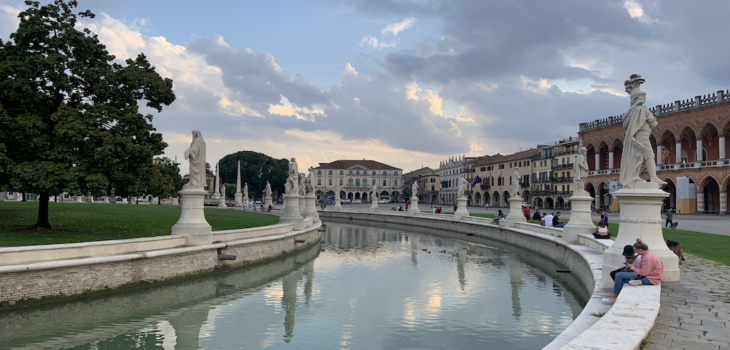
Discovering the Beauty of Home and Away
Living abroad for an extended period of time has been an eye-opening experience that has challenged my preconceptions and taught me many valuable lessons. When I first left Sweden to live in Italy for six months, I did not expect that I would start to appreciate my own culture more. Before leaving, I thought Swedish culture was rather bland and unexciting (”mellanmjölk”). But being away from home has given me a new perspective, and I now see that there is truth to the saying that you don’t know what you’ve got until it’s gone.
One thing I missed about Sweden is the fresh smell of the forest, and how clean the air is in Stockholm. The rain in the Nordic region seems to keep the air less dusty. I wanted to go to a sunny and warm country, despite this I found myself missing the autumn and winter seasons. It gets colder in Padua, Northern Italy, during the winter months, and the leaves do change colors, but it’s just not the same. In Stockholm, there is a different vibe with the fall and winter seasons. There is snow, slush, and gray weather but in a cozy way — it makes you want to want a hot cup of tea and some fika.
Since leaving Sweden, I have been reflecting on what characterizes the Swedish culture. My list so far includes fika, IKEA, being reserved and introverted, making decisions together, ’lagom’ and everything it entails, orderliness, the archipelago, countless small lakes, crispbread, semla, midsummer, ”fredagsmys”, punctuality, and flaggpunch. Not bad, right? I have gone from not appreciating any of these things to finding them beautiful and special. I have even started listening to Swedish music, something I almost never did before.
Part of my newfound appreciation for Swedish culture comes from enjoying sharing it with others. Whether it’s explaining what midsummer is or baking chocolate balls and seeing my friends’ reactions when they try them, it feels like something special to share and learn about different cultures and traditions. I love making my friends laugh by explaining that Swedish people have a frog dance they do around the midsummer pole…or humorously say that I never get cold because I have viking genes.
Despite the many differences between Italian and Swedish cultures, I have noticed many similarities. For example, both cultures have a shared love for nature and the sun, an appreciation for food (both have meatballs!), the importance of being well-read, and a love for coffee. Living abroad has allowed me to understand so much more about Italian culture. Before coming here, my knowledge of Italian culture was limited to pizza, hand gestures and gelato — but that is only the tip of the iceberg!
Compared to Sweden, Italy has an immense amount of art and architecture. From the ancient Roman ruins to the Gothic cathedrals, there is so much history and beauty to explore. More than what can be seen in one lifetime. The north of Italy, where I lived, has a particular charm and atmosphere. The streets are lined with cute cafes and shops, and the cities are dotted with beautiful piazzas and historic landmarks.
One of the things that struck me about Italian culture is the importance placed on family and community. It is common for families to live in the same town or village for generations, and people are very close to their extended family members. This is very different from Sweden where people move out earlier and tend to be a bit more distanced from family. I have also noticed that Italians have a strong sense of pride in their regional traditions and cuisine. Each region in Italy has its own unique culture and culinary specialties, and Italians take great pride in sharing these with others.
One of the things I believe that north europeans should learn from Italians is how they express their feelings. They are more open with it and not scared of conflict. I wonder what communication would be like if everyone applied the best parts from all cultures, if that’s even possible. On a similar note north europeans could also learn to become warmer and communicate in a more loving way. I wonder why cultures evolve to be a certain way — maybe that’s a future blog post.
In conclusion, living abroad has been an enriching experience that has allowed me to gain a deeper understanding and appreciation for both my own culture and Italian culture. It has allowed me to challenge and broaden my own perspectives and has given me the opportunity to connect with people from all over the world. Although there are differences, there is far more common ground that brings people together. While there certainly are challenges that come with living in a foreign country, the rewards and personal growth that come from the experience are truly invaluable. It changes you for the better and I can’t wait to do it again.


